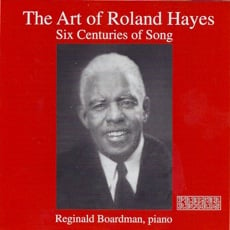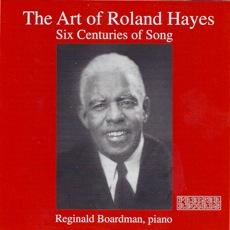
Lyric tenor and composer Roland Hayes (1887-1977) may be the most important “Aframerican” (his term) classical singer of the 20th century that you don’t know about. Part of his obscurity is due to the curse of racism. Although Hayes made a successful, self-produced recital debut in Boston Symphony Hall in 1917, the roadblocks to success faced by what we now term Black artists led him to sail to Europe, where he made a successful debut in 1920. Two years later, a triumph in London’s Wigmore Hall led to an invitation from King George V and Queen Mary to sing at Buckminster Palace.
After continuing his vocal studies with a number of teachers, including Maurice Ravel, Hayes returned to the United States. This time, both Boston Symphony Hall and Carnegie Hall welcomed him with open arms. By 1924 he was singing more than 80 concerts a year. Dubbed the “Black Caruso,” he was able to sell out the Hollywood Bowl as well as Wigmore Hall and Covent Garden.
Listen To The Music
Come again, Sweet LoveSometimes I feel like a motherless child
With the opera house closed to him, Hayes’ success in the United States was never complete. In 1931, he demanded that the audience at his Constitution Hall recital be desegregated. Although white audience members refused to change seats, and the concert continued, the incident led the hall’s management to institute a “white artists only” policy. Thus the stage was set for contralto Marian Anderson’s famed 1939 run-in with the Daughters of the American Revolution, who refused to let her sing in Constitution Hall. At the invitation of First Lady Eleanor Roosevelt, Anderson subsequently performed on the steps of the Lincoln Memorial.
Anderson has credited Hayes’ singing as a major inspiration for her career. She is not alone. The great William Warfield, who for a time was married to Leontyne Price, recounts a conversation with the elder Hayes in which he said, “I started all this … Now, you can’t stop where I stopped; you’ve got to go on.”
For invaluable insights into Hayes’ career and legacy, I recommend the MP3 of a recent short talk by Christopher Brooks, who is writing a biography of Hayes.
Despite his fame, Hayes made relatively few recordings in his prime. Some early tracks can be found in compromised MP3 form at various sites on the Web. Among the best are fragments from 1911, when he sang second tenor with the Fiske Jubilee Singers; one from 1919, where he sings a surprisingly credible, albeit light-voiced lyric tenor version of “Vesti la giubba” from Leoncavallo’s Pagliacci; and at least one clip on YouTube.
The only CD currently available is Preiser Records’ 2-disc set, The Art of Roland Hayes: Six Centuries of Song. Consisting of 57 selections, originally released in 1953 and 1954, the recordings range from Old English folk songs, Dowland, Handel, Mozart, Schubert, Debussy, and Wolf to Hayes’ arrangements of “Aframerican” folk songs, Negro worksongs, and spirituals. Though some are unaccompanied, most feature the pianism of Reginald Boardman.
Despite the beauty of the voice, there is no getting around the fact that, especially higher in the range, age has taken its toll on Hayes’ instrument. Nor, despite exemplary diction, are the French and German even remotely idiomatic.
Yet Hayes’ artistry remains intact. Listen, for example, to the way he caresses phrases in Dowland’s “Come again, Sweet Love, doth now invite.” The phrasing and accents are hardly what we would consider authentic, but the sensitivity to meaning and intention are supreme. The voice, too, is at its honeyed best. It’s a wonderful performance.
Spirituals are vigorously and convincingly sung, with the unaccompanied “Sometimes I Feel Like a Motherless Child” so deeply felt that it could tear your heart apart. From great performances such as these, we can begin to imagine the tremendous impact Hayes made when his voice was at its peak.

